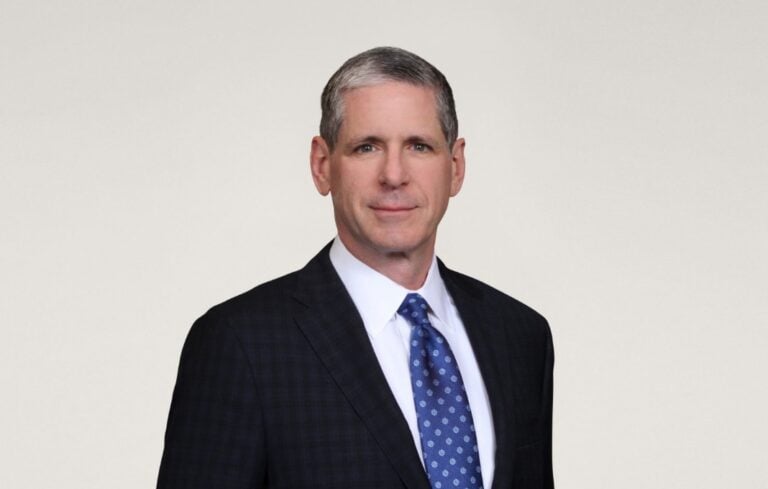

I’ve been fortunate to be able to work with Kim Rivera, Chief Legal Officer and Corporate Secretary at HP Inc., as her executive coach for the past six years. When she shared that she’s been doing some innovative things to encourage diversity and inclusion, I was interested in learning more about her efforts. We sat down recently for a conversation about the scope of the challenge and how she’s helping HP tackle it head on.
Why have you focused on diversity as a leader at HP?
As a woman of color and an executive, diversity is a topic I have been engaged with for more than twenty years, mostly as it relates to the legal profession, but also as it relates to corporate America, women and underrepresented minorities in positions of power. My particular focus has been to draw attention to the lack of progress being made on all of these fronts.
I recently heard the most depressing statistic: At the current rate of change, women in law firms will achieve equity in the year 2181. Through this perspective, I feel an urgency to try new solutions and have those solutions produce faster results. We are well past the day of improving incrementally.
How would you describe HP’s philosophy around diversity and inclusion?
At HP we believe that the success of our company in the long run hinges on innovation, and we cannot innovate and create a winning culture without diversity. Because we believe driving diversity and inclusion is core to our success, the level of rigor, thoughtfulness, and commitment at all levels is strong. In turn, this has led to a sustained effort to find ways to reinvent mindsets and reinvent approaches to tackling the difficult challenge of driving diversity and inclusion.
How did that inspire your approach to the issue?
All of this sparked new ideas for me. Creating a culture of diversity and inclusion is not a simple challenge; it is complex and multifaceted. I began by focusing on how to drive faster or more disruptive change and thinking about new ways to change behaviors and outcomes.
As you said, it’s a complex challenge. How did you break it down into something manageable that you could start addressing in a meaningful way?
I sat down with my team, and over many conversations, we got to the core of the issue for us. Just like other professions or other businesses, we think innovation and modernization are essential to the sustained vibrancy and relevance of the legal profession. Our profession is behind others on this front, so advancing the profession isn’t just the right thing to do; it’s a necessity. If we don’t, we will eventually become marginalized.
What led you to the idea of implementing financial incentives as a way to tackle the problem?
We asked ourselves: What can we try that hasn’t been tried? What would be bold and pull on new levers to cause change at a different pace? And we thought, what if we treat diversity and inclusion like other performance requirements? One of the biggest intractable barriers is the traditional economic structure and incentives in large law firms. What could we – their biggest clients — do to drive change? To put it bluntly, sometimes the only color that matters is green. We realized that implementing financial incentives could move behavior faster than anything else.
Did you have any concerns about taking that approach?
We weren’t at all sure if it was going to work. We spent a lot of time talking about the pros and cons. We looked at what other people were doing, we talked to other companies and general counsels. We took all that in and decided we were going to try to be innovative and bold. We were going to experiment by doing something that had never been done before. We have all kinds of criteria for working with external law firms, so we decided to create diversity metrics as an additional performance criterion.
How was that structured?
We decided we would withhold part of their fees until they were performing against our metric. We would make it a contractual condition to doing business with us.
We know that many law firms would like us as a client and want to collaborate with us. With our new criteria, we could assure that some percentage of our dollars will flow directly to the underrepresented minorities and women who do not gain the same level of access to the work that helps develop their careers and gives them influence inside their firm.
We purposely introduced this program by launching a “pilot year,” during which we solicited information and reported results, but withheld no fees. Working collaboratively with our law firms was invaluable and enabled the programs’ success. We recognize that the only way to enable the systemic change we are seeking is by working together with our law firm partners.
What results have you seen so far?
A little more than a year into it, we have proven that it works and it works very quickly. We have seen a nearly 30% increase in the percentage of firms meeting our diversity requirements, which naturally translates into more women and otherwise diverse attorneys leading and/or doing our work. We have seen a particularly strong increase in the number of diverse partners appointed as HP relationship partners, which we anticipate will yield even more diverse teams in the future.
We believe it has had this effect because we were specific about what we wanted, we were clear about how we would track and measure it, and we were collaborative in how we put measures in place. When people did not meet the diversity performance criteria, we withheld the money.
What’s next?
Our next step now is to figure out how to get other people outside of HP to adopt our program. If we can get 10% of large corporations to adopt this program, suddenly a giant percentage of revenue treated in the same way will behavior change on an even bigger scale. People will move, things will happen.
Will it be perfect? No. Will everyone adopt it immediately and love it? No. But will change happen faster than at a forty- or fifty-year pace? Absolutely. That is what we are looking for.
I am trying to encourage everyone to do this or something very near to it — something that is designed to create rapid change that is meaningful and causes a shift in the leverage and power that women and underrepresented minorities have in the current system.
What is your higher-level vision for this program?
At HP we are driving the fourth Industrial Revolution, but the model of many law firms operates from a framework built for the first Industrial Revolution. I am trying to highlight this gap and offer that diversity is a big part of a necessary cracking apart for the legal profession to become more modern and innovative. I have a fabulous team who work hard day in and day out. It takes a lot of work to build a program like ours, especially the infrastructure for data tracking. We believe it is worthy work.
If we can persuade others, my vision is to find a billion dollars in client funds that can be put into this kind of structure, because I think it could cause a seismic shift. And that is very exciting.




Chief Executive Group exists to improve the performance of U.S. CEOs, senior executives and public-company directors, helping you grow your companies, build your communities and strengthen society. Learn more at chiefexecutivegroup.com.
0

1:00 - 5:00 pm
Over 70% of Executives Surveyed Agree: Many Strategic Planning Efforts Lack Systematic Approach Tips for Enhancing Your Strategic Planning Process
Executives expressed frustration with their current strategic planning process. Issues include:
Steve Rutan and Denise Harrison have put together an afternoon workshop that will provide the tools you need to address these concerns. They have worked with hundreds of executives to develop a systematic approach that will enable your team to make better decisions during strategic planning. Steve and Denise will walk you through exercises for prioritizing your lists and steps that will reset and reinvigorate your process. This will be a hands-on workshop that will enable you to think about your business as you use the tools that are being presented. If you are ready for a Strategic Planning tune-up, select this workshop in your registration form. The additional fee of $695 will be added to your total.

2:00 - 5:00 pm
Female leaders face the same issues all leaders do, but they often face additional challenges too. In this peer session, we will facilitate a discussion of best practices and how to overcome common barriers to help women leaders be more effective within and outside their organizations.
Limited space available.

10:30 - 5:00 pm
General’s Retreat at Hermitage Golf Course
Sponsored by UBS
General’s Retreat, built in 1986 with architect Gary Roger Baird, has been voted the “Best Golf Course in Nashville” and is a “must play” when visiting the Nashville, Tennessee area. With the beautiful setting along the Cumberland River, golfers of all capabilities will thoroughly enjoy the golf, scenery and hospitality.
The golf outing fee includes transportation to and from the hotel, greens/cart fees, use of practice facilities, and boxed lunch. The bus will leave the hotel at 10:30 am for a noon shotgun start and return to the hotel after the cocktail reception following the completion of the round.